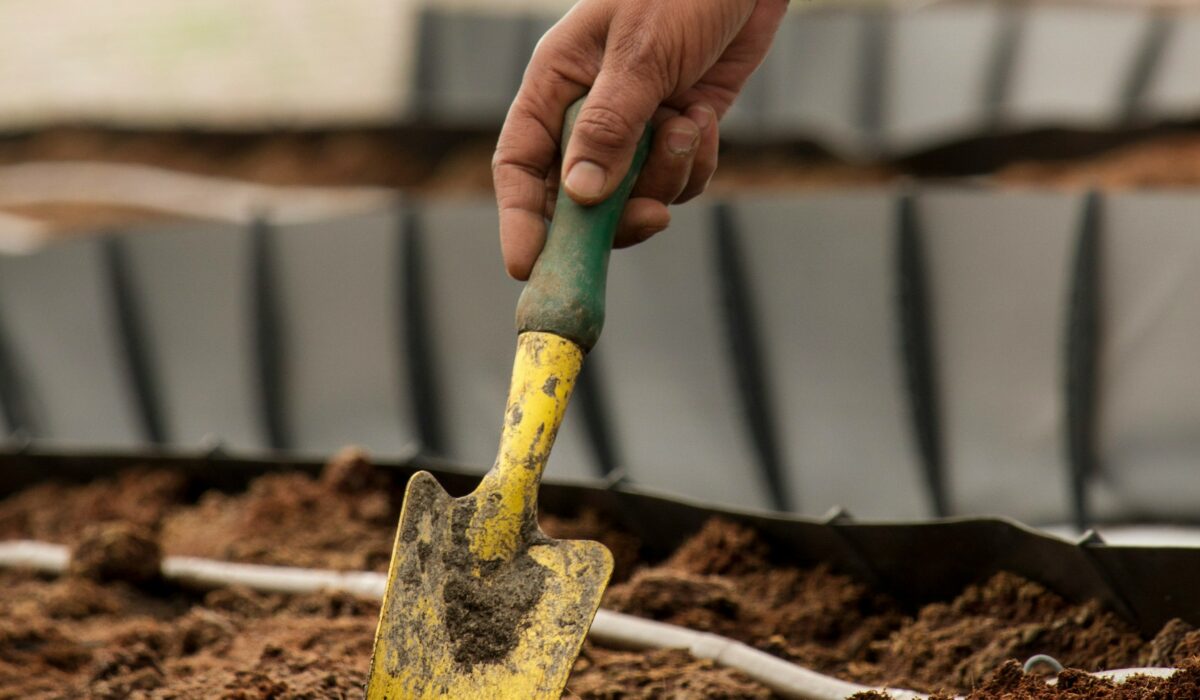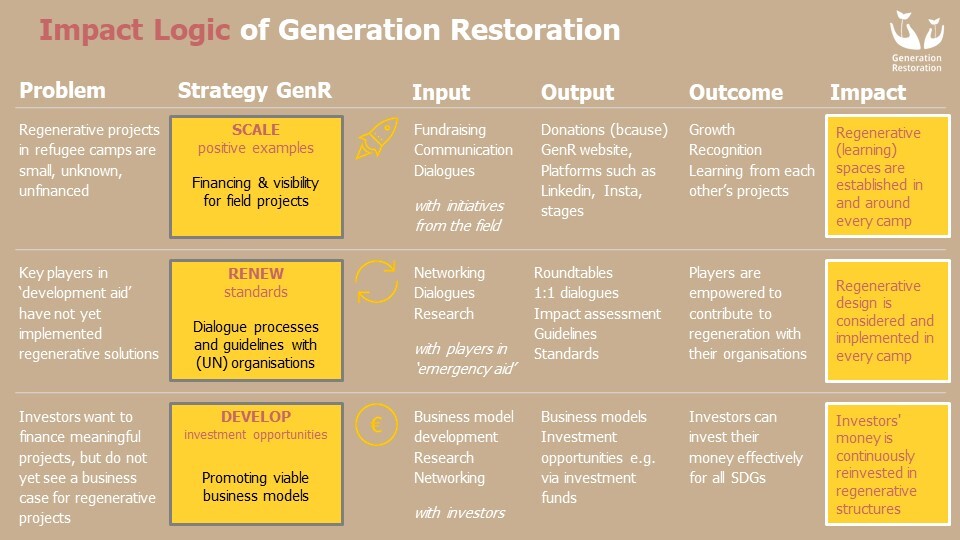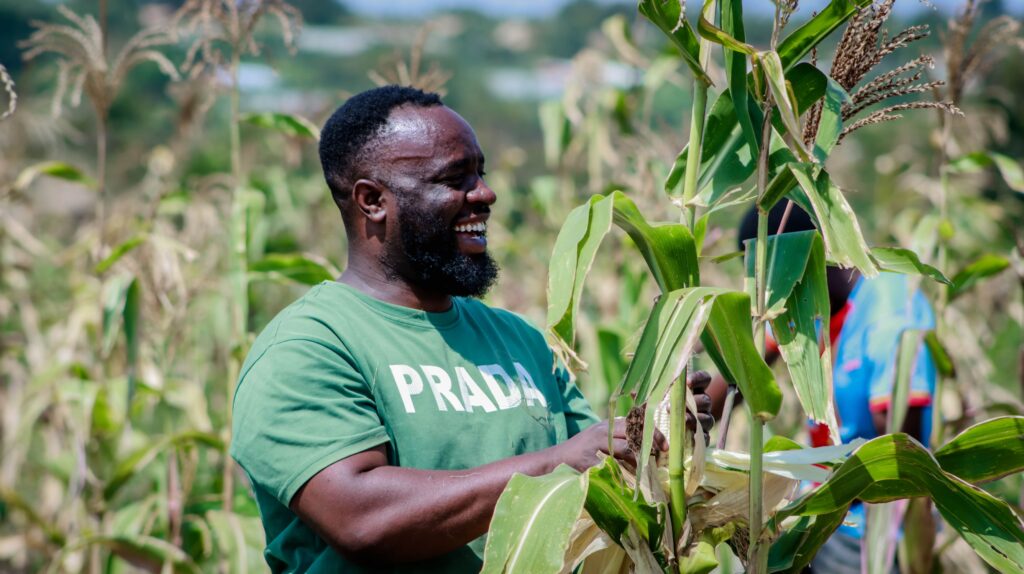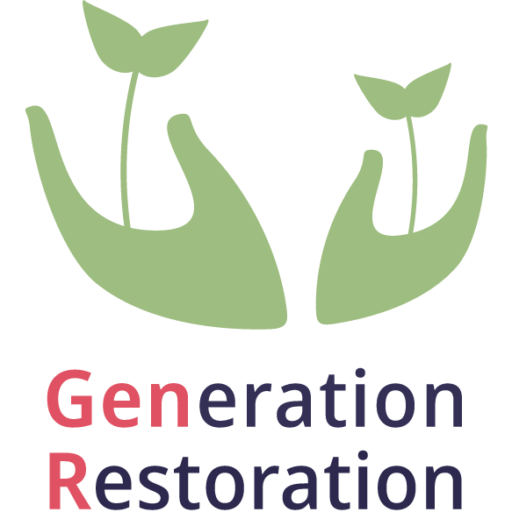
THE CHALLENGE
Repairing Planet, People and Peace
Refugees & Restoration for Future
We are the Generation Restoration
THE STRATEGY
The needs detected in our stakeholder dialogues were scaling, funding, guidance and networking.
VISION:
Our vision is to empower refugee camps worldwide to transform from stagnant places of dependency into thriving places of hope. Through regenerative methods such as permaculture, forest gardening (agroforestry), the restoration of ecosystems and social business. We want to inspire and contribute to this.
WHY:
Need for healing people and planet, ecosystem services, food, peace
HOW:
Speed & scale for regenerative solutions in refugee camps
WHAT:
We bring together organisations, projects, funding and networks – as a bridgebuilder
Our goals for 2024 & 2025:
We want to measure and visualise the sustainable impact of regenerative projects in refugee settlements (impact assessment). To this end, we want to strengthen existing grassroots projects and support their successful further development. The lessons learned will be incorporated into systemic change: in parallel, we are working in multi-stakeholder dialogues with UN organisations and NGOs on how regenerative design can be incorporated into camps, strategically, through guidelines and cooperation. We want to strengthen the root system of resilient societies.
General Observations
- Restoration with refugees has a great potential.
- Good examples with knowledge & experience already exist.
- Obstacles hinder them to be widespread yet.
- Learning from each other can help overcome the constraints.
- It needs grass root support, new standards and viable approaches for impact investment.
Strategy & Theory of Change
1. SCALE Positive Examples: Funding for grass root projects to multiply
Successful grass root projects with proof of concept now need fast AND long-term oriented funding to multiply their impacts, for example to create permaculture train-the-trainer-programs, build educational centers and train millions of refugees.
2. CHANGE Standards: Facilitating dialogues with standard setters (guidelines)
Big institutional stakeholders and NGOs are not yet focusing on long-term regenerative solutions on a large scale. In a facilitated participatory process, they co-develop common visions and strategies, including learnings and wisdom from existing projects.
3. DEVELOP Opportunities: Cultivate business models for impact investment
Impact Investors are only just now realising the potential of combining ecosystem restoration with humanitarian or development aid, resulting in multiple benefits. They need guidance on how to measure positive impact of projects and how to help them become “investable”.

“We want to strengthen the root system of a resilient society. We are the Generation Restoration.”

Regenerative practices in refugee camps and settlements can contribute
to the achievement of all 17 UN Sustainable Development Goals (SDGs). See here how:



